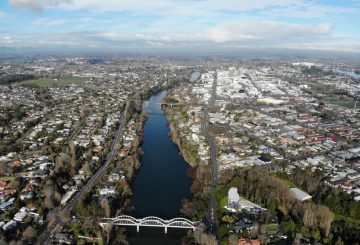A Chinese New Zealander says she’s struggling to reopen her Auckland business because her mother has been stranded in Fiji for almost three months.
Ms Liu in Fiji. She says stranded parents have become restless. Ms Liu in Fiji. Li Yuning’s mother flew to Fiji to renew her New Zealand visa on 19 March, just hours before borders were closed to foreign nationals due to the Covid-19 pandemic, making her one of the dozens of Chinese nationals with family connections to New Zealand stuck in Fiji.
Her mother’s planned three-day tour to Fiji to renew her visa and return has now extended to almost three months.
Li said her mother had been in New Zealand to help care for her one-year-old son.
Now, Li’s takeaway business was at risk, she said.
“I need my mum because I work in hospitality and now it’s really a big challenge for us. If we’re not working, we have no income. I have my staff and I have to look after my staff.”
Li has been running a restaurant selling noodles in Auckland since 2017.
Li’s mother visited New Zealand on a visa which allowed a total stay of up to 18 months within a three-year period.
Li said the visa’s renewal was every six months and that time period was too short.
She said it would be great if the government could come up with a new parent visitor visa which allowed them to stay longer with each entry.
She was happy to buy insurance and pay for any costs her mother’s stay incurred.
Li’s mother, Liu, who did not want her full name used, said she and other parents had been growing restless in Fiji.
“It has been a long time now, more than two months. After two months, I almost feel like I can’t take this any more. Eating is almost like fulfilling a task. We would take a walk at the seaside… there isn’t much going on everyday, but I still feel stressed.”
The Chinese embassy said it took two flights of more than 50 Chinese nationals back to China from Fiji and it was working with Air New Zealand to take another 100 people left there soon.
However, Liu did not want to go to China. She has chosen to wait in Fiji until she can come back to New Zealand.
“My biggest hope is that I can return to my daughter and help her take care of her child. Then she can concentrate on work, be a good leader to her staff and help solve the employment issue in New Zealand.”
Ms Liu says she wants to come back to NZ to help her daughterMs Liu says she wants to come back to NZ to help her daughter Photo: Supplied
An Auckland man, who did not want to be named, said his stranded parents decided to go back to China from Fiji with the chartered flights.
His parents held a five-year multiple entry visa for New Zealand but they can only stay for up to three months each time.
His parents flew to Fiji on 18 March, and he said by the time the border closure was announced, the last flight from Fiji to New Zealand had already gone.
He said the high earning threshold for a parent resident visa meant it was almost impossible to get one, but he wanted a visa that allowed a longer visiting term.
“In China we had this only child policy. We are the only child in the family. Our parents are getting old. They need to be taken care of and we can afford that but there’s no such visa which allows them to stay here for a longer period of time,” he said.
“You can imagine when people getting old and they have to take a flight to fly out of New Zealand and then come back to renew their visa which sounds very silly and very torturing for them.”
Immigration Minister Iain Lees-Galloway said in a statement that work was underway to return more people to New Zealand, but there was no plan to consider an extended multiple entry parent visitor visa past six months in one visit at this stage.
“New Zealand acted quickly to close the border in order to protect people in New Zealand. Quite a number of people made it home in the days before it was closed but obviously not everyone. I understand this has been difficult for people stuck outside the border, that’s one of the many sacrifices people have made to keep us safe.”
He said changes had been made on Tuesday to allow partners of citizens and residents to return while travelling on their own or with dependants.




























































